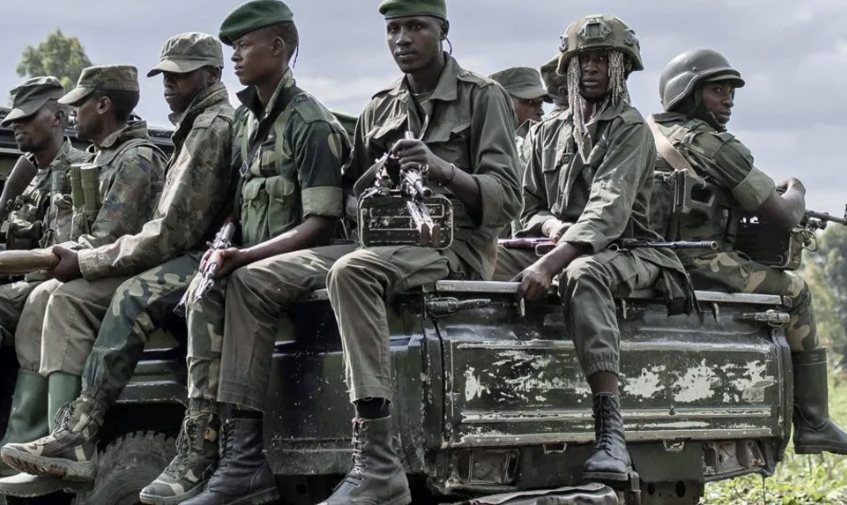
What you need to know about M23 leader Sultani Makenga
M23 currently controls the eastern city of Goma in DRC
The M23 draws its name from a peace agreement made on March 23, 2009.
In Summary
 M23 rebel group/FILE
M23 rebel group/FILE
A few weeks ago, the Democratic Republic of Congo (DRC) and the M23 rebel group were not a matter that was seen to be of great concern to many across the globe.
Today, however, it is a matter that cannot be ignored.
The United Nations Security Council (UNSC) held a session to discuss the situation in the Democratic Republic of Congo.
This was as a result of the escalation in Eastern DRC city of Goma, where the M23 took over after a fierce gun fight with Peace keeping forces from the Southern African Development Community (SADC), known as SADC Mission in the Democratic Republic of Congo (SAMIDRC).
Several DRC soldiers were also killed in the process, with others reported to have surrendered.
Goma, a major eastern city with a population of more than a million.
The conflict also saw several mercenaries hired from European countries, especially Romania surrender after they were over powered by M23 rebels.
After capturing Goma and its main airport, the rebels have continued their advance and just this week, they capture the city of Bukavu. They have not stopped. They plan to advance further.
Other locations now under M23 control include Masisi, Rutshuru and Katale.
The mineral-rich east of the Democratic Republic of Congo has been dogged by conflict for more than 30 years, since the 1994 Rwandan genocide.
The M23 had become increasingly active in eastern DRC, stating that they were fighting to protect Tutsi rights, and that the government has previously failed to honour a peace deal signed in 2009.
The group insists that several previous deals to end the fighting have not been respected.
The M23 draws its name from a peace agreement made on March 23, 2009.
The group was, however, created in 2012.
Shortly after its creation in 2012, the M23 rapidly gained territory and seized Goma.
The rebel was then forced to withdraw from Goma after it suffered a series of heavy defeats by the Congolese army, which had the support of the United Nations force.
The M23 was then expelled from DRC.
M23 fighters would on reach an agreement with DRC authorities to be integrated into the army in return for promises that Tutsis would be protected.
However, in 2021, the group took up arms again, saying the promises made by DRC had been broken.
Rwanda has been accused of backing the M23 rebels over the years, but it denies any involvement.
The President Paul Kagame-led administration insists that those are problems of the DRC and that all they are doing is protecting the problem from spilling into their country as the Eastern DRC region shares a border with Rwanda.
Kagame has also accused the DRC government of working with the Democratic Forces for the Liberation of Rwanda (FDLR), a Rwandese rebel group that is still active in eastern DRC.
Rwanda describes the FDLR as a "genocidal militia" and says its continued existence in the DRC threatens its own territory.
DRC authorities, however, deny working the rebel group.
With the recent escalation, President Felix Tshisekedi insists that there will be no dialogue with the M23 rebel group.
He has vowed to vigorous response adding that his country will triumph.
In a televised address to the nation, he said a "vigorous and coordinated response" against what he called "terrorists" was under way.
Tshisekedi has also criticised the international community for "inaction" and for not doing enough in the wake of the escalating security crisis.

M23 currently controls the eastern city of Goma in DRC